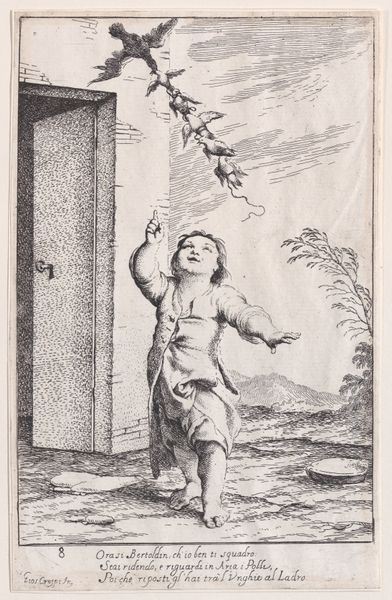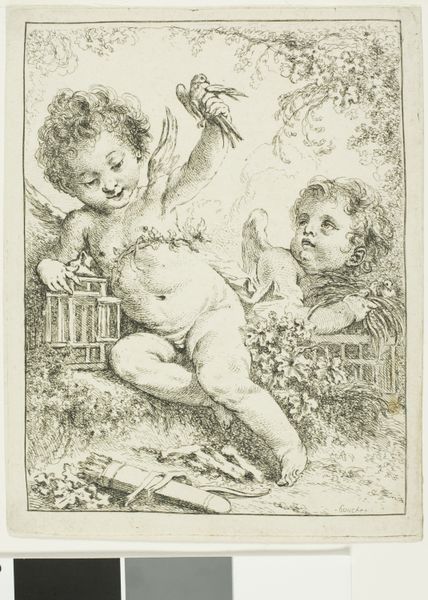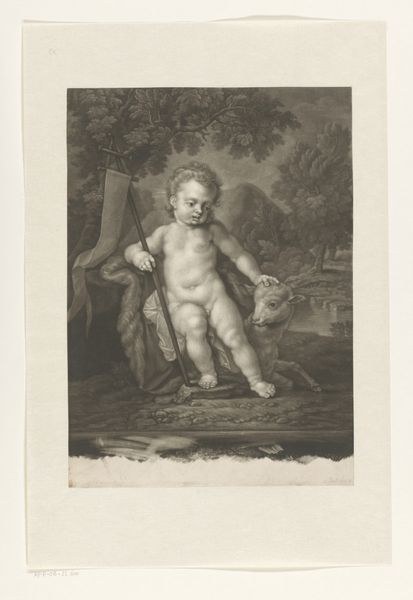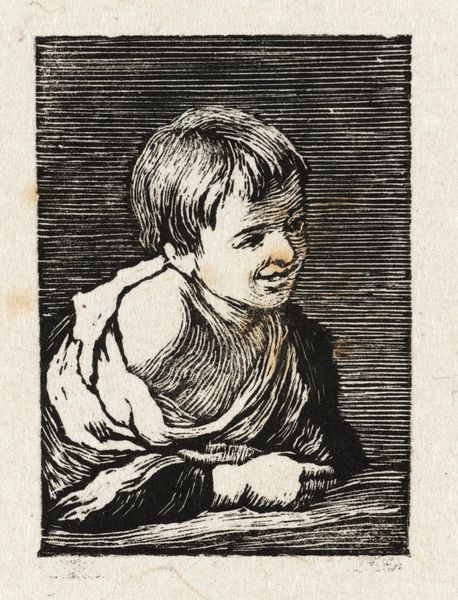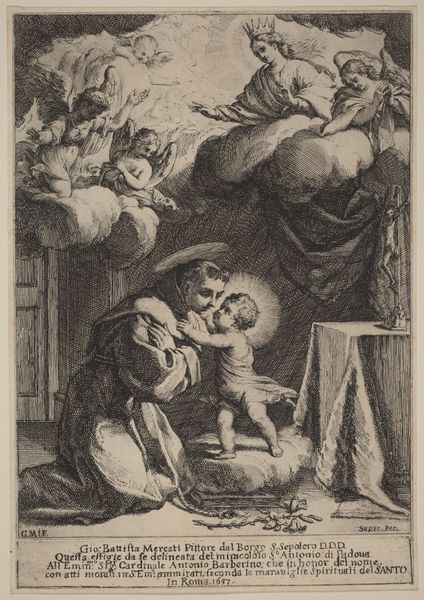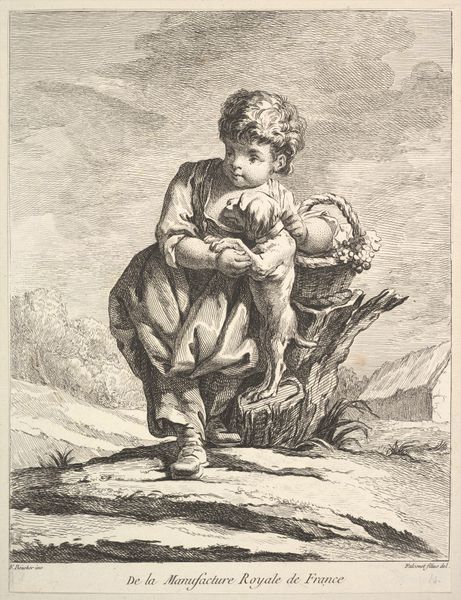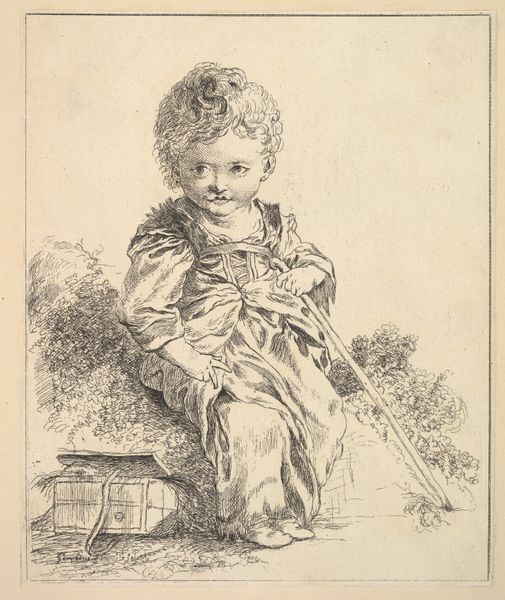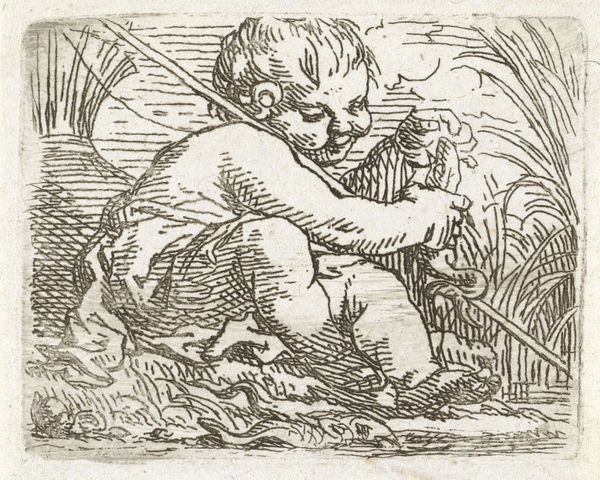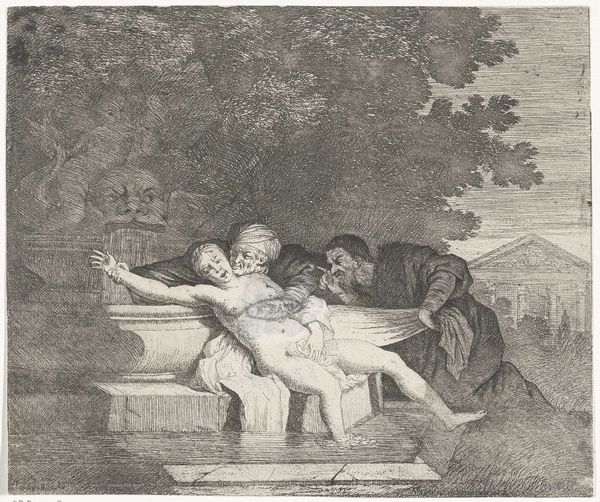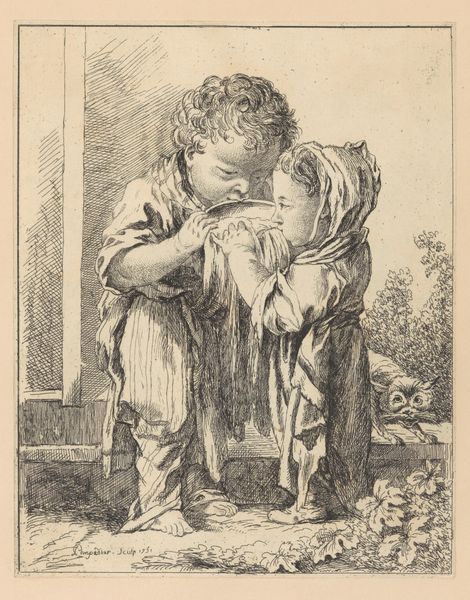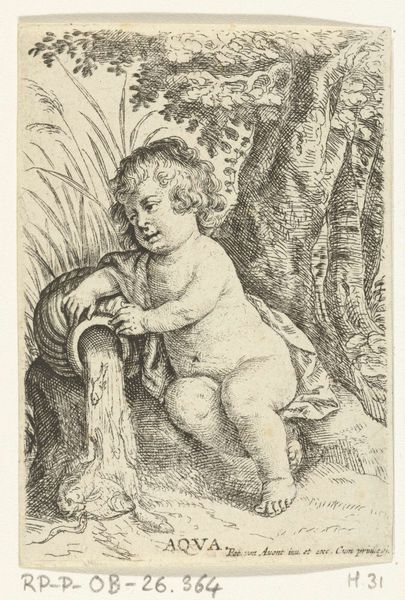
Plate 12: Bertoldino whipping himself to kill flies, from "Bertoldo, Bertoldino, and Cacasenno" 1705 - 1715
0:00
0:00
drawing, print, etching, engraving
#
drawing
#
narrative-art
#
baroque
# print
#
etching
#
figuration
#
genre-painting
#
engraving
Dimensions: Sheet (Trimmed): 9 1/16 × 5 13/16 in. (23 × 14.8 cm)
Copyright: Public Domain
Curator: What a curious scene we have here in Giuseppe Maria Crespi's etching, "Bertoldino whipping himself to kill flies, from Bertoldo, Bertoldino, and Cacasenno," dating back to the early 18th century. I find the sheer absurdity captivating. Editor: My initial impression is one of whimsy mixed with a touch of self-inflicted suffering. The figure's determined expression, the swarm of flies, and that homemade weapon… it’s all rather perplexing and, in a way, poignant. Curator: This print, currently residing at the Metropolitan Museum of Art, draws from a rich well of comedic storytelling. The character Bertoldino comes from a tradition of Italian comedic folk tales. Crespi really places the character within this established history. The story centers around the exploits and mishaps of a shrewd, simple-minded peasant. It is not simple humor, though. Crespi often infuses it with a cutting critique of social mores. Editor: That context truly illuminates the work. Visually, I'm intrigued by the recurring motif of swarms – the flies themselves, but also the bundle of sticks he wields, even the implied multitude within the narrative. Is there a symbolic weight to this density? Curator: I see it as an act of resistance against an oppressive power structure, but using comical terms, because it cannot be accomplished seriously. The flies represent an endless source of minor irritations – injustices perhaps – that Bertoldino attacks head-on, even if his methods are utterly absurd and counterproductive. It speaks volumes about the struggles of those at the bottom of society. It emphasizes this social narrative, that even someone striking themselves has societal implications, or societal origins for their odd actions. Editor: The Italian landscape, depicted simply but elegantly in the background, suggests a setting for a fable, adding depth. Crespi doesn't portray a mere slapstick gag; there is also something universally identifiable in his flawed attempt to triumph against his small enemies. He reminds me of a David made small and helpless, pitted against his Goliath. Curator: Your reading enriches my understanding as well. Crespi uses humor not just as entertainment, but as a mirror reflecting the complexities of identity, societal inequalities, and the resilience of the human spirit, or lack thereof, when faced with systemic problems. It’s an image that speaks across time and culture. Editor: Absolutely. The image retains an unnerving energy because of its mix of symbolism and comedy. Crespi’s blend urges us to question, and not simply to laugh at, our absurd defense tactics against the myriad of irritations.
Comments
No comments
Be the first to comment and join the conversation on the ultimate creative platform.
